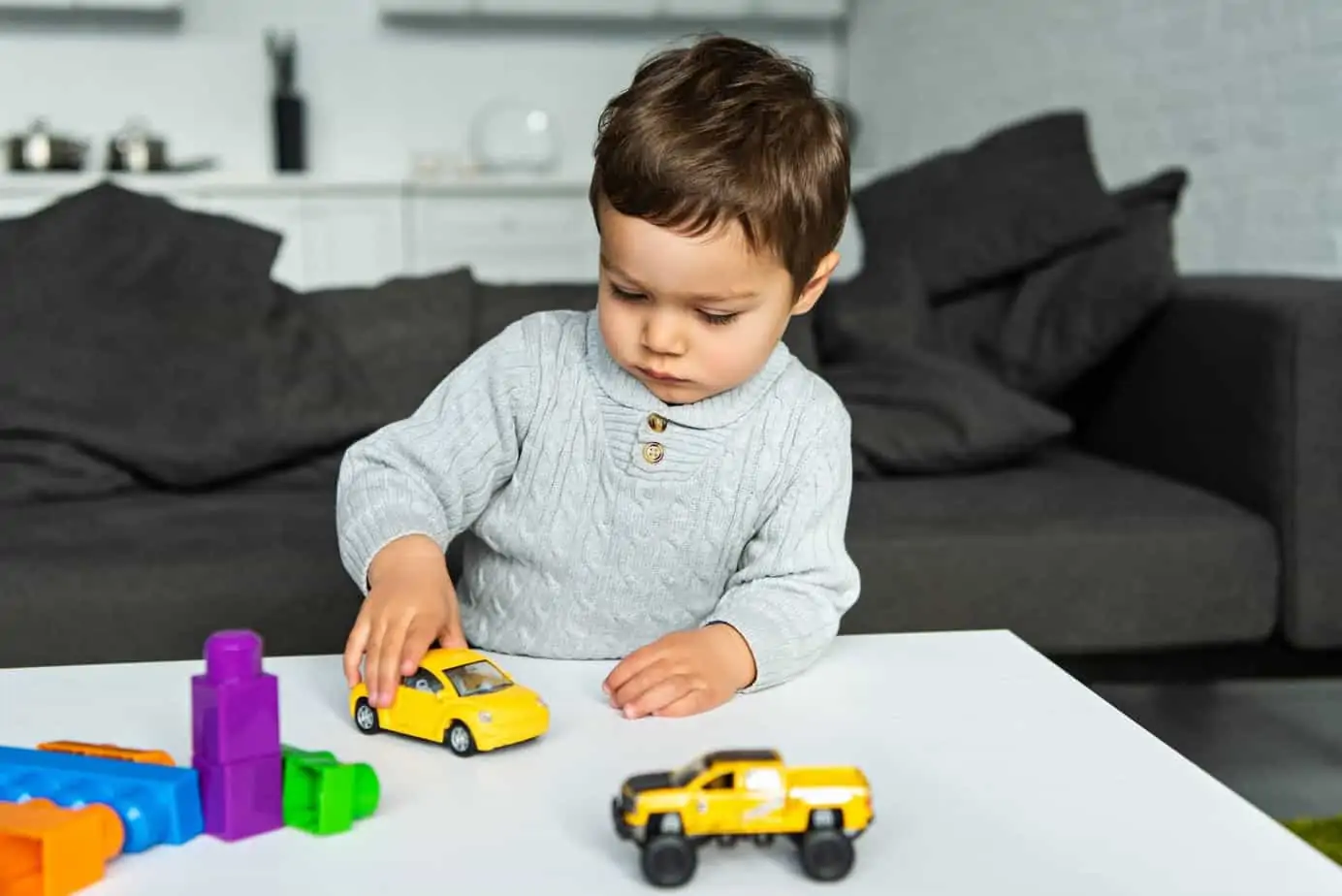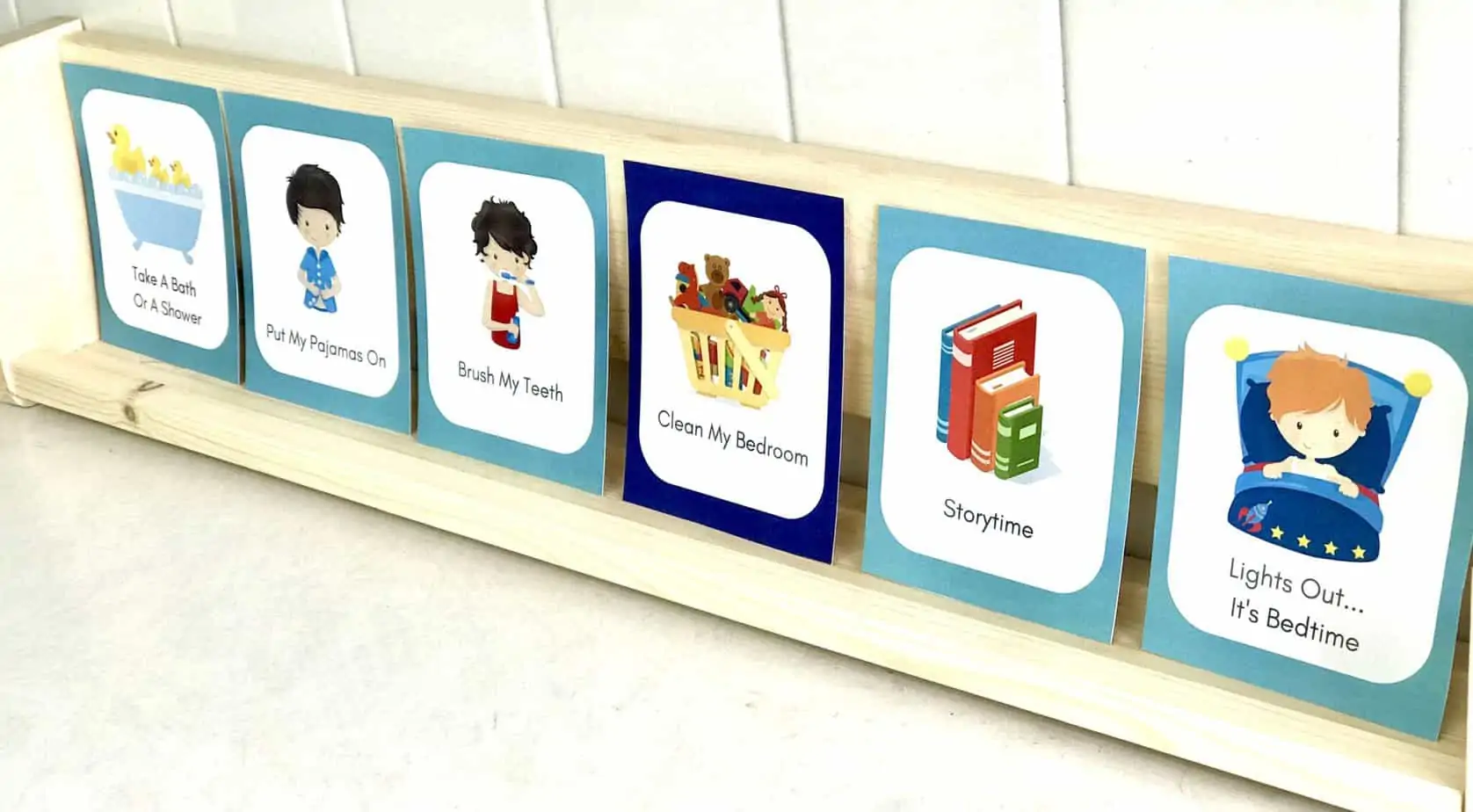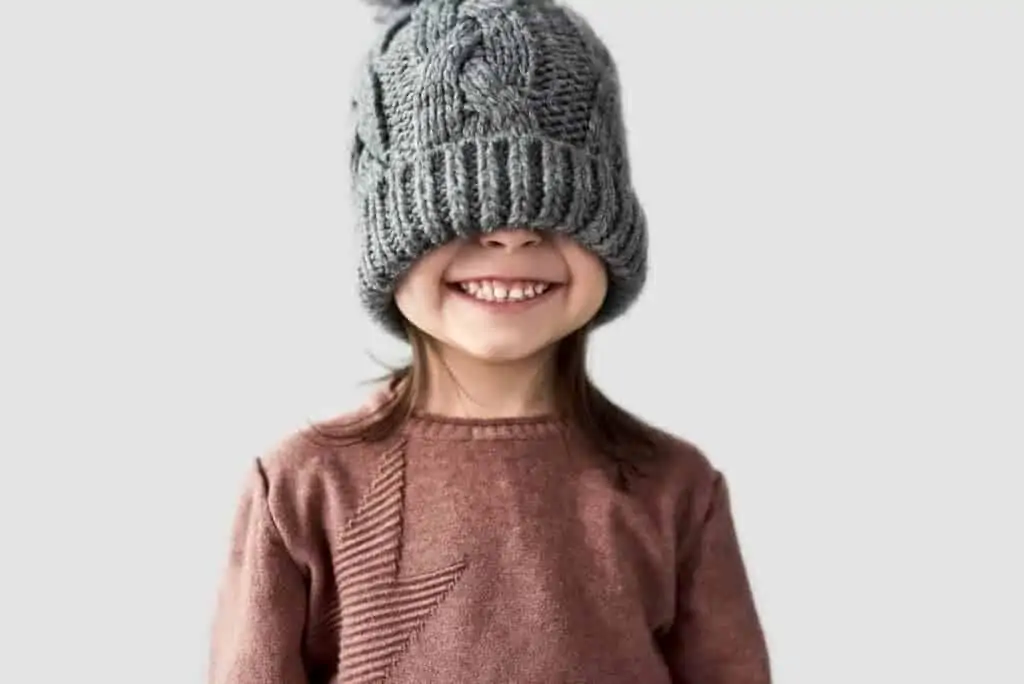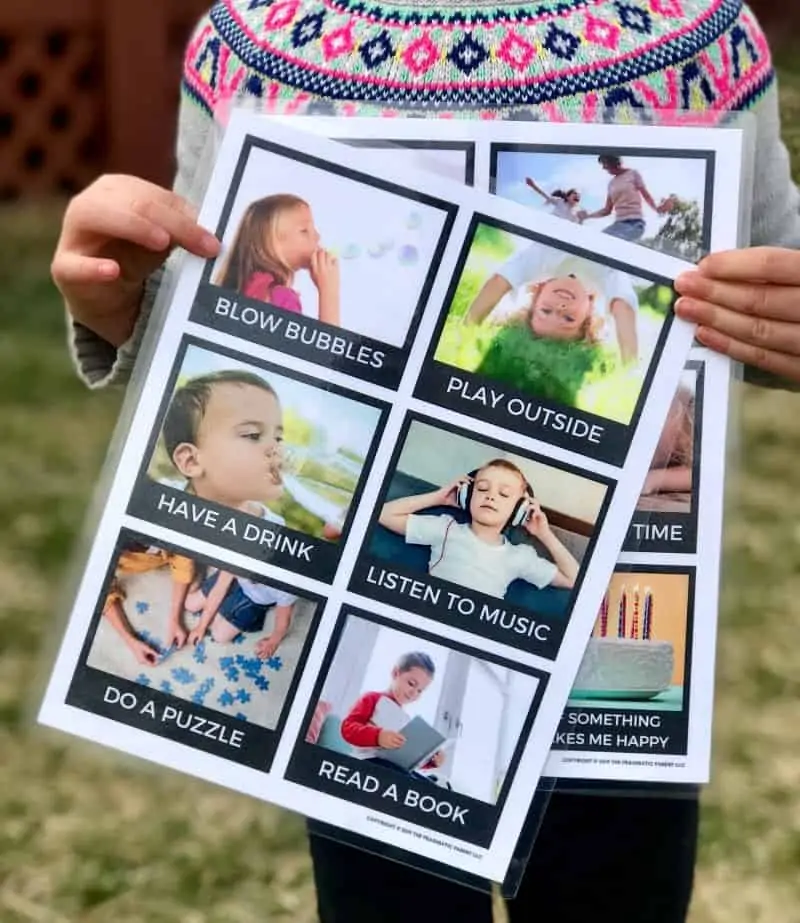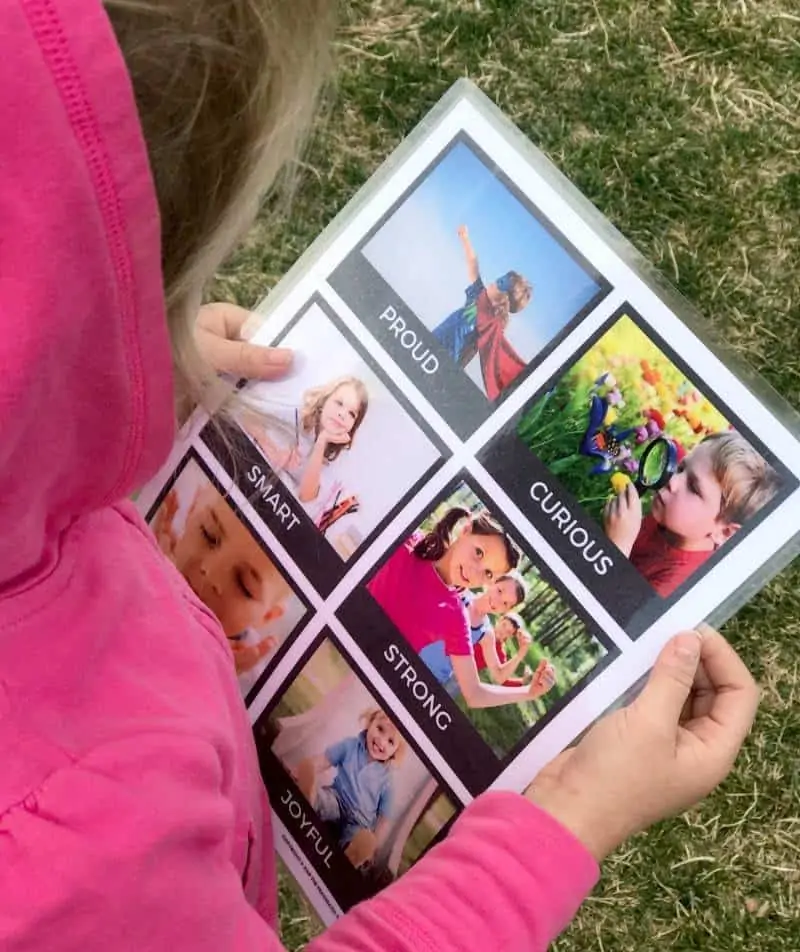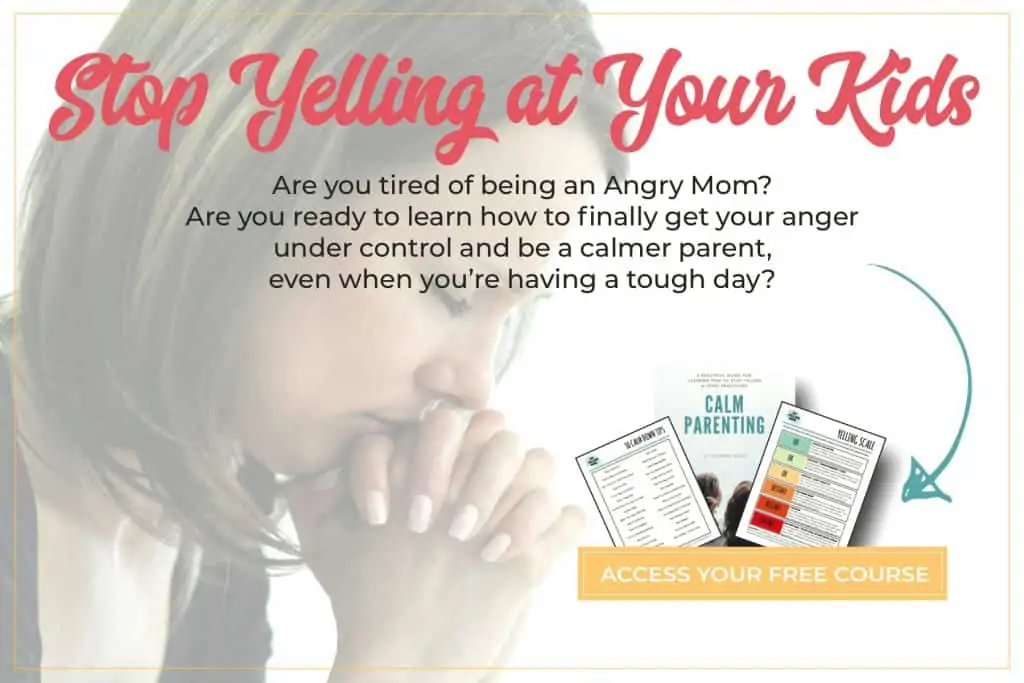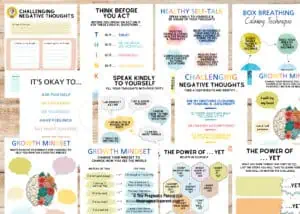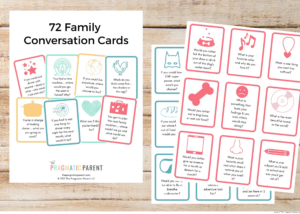What factors can influence children’s behavior and trigger misbehavior including tantrums, outbursts and back talk? 14 Factors that Trigger Challenging Behavior and how printable picture routine cards and a dialed in daily routine will make a world of different with behavior!

14 Factors Influencing a Child’s Behavior or Can Trigger Their Misbehavior
When you’re frustrated, do you find yourself asking (or even snapping at) your child:
- “Why did you throw that?”
- “Why did you hit your little sister?”
- “Why would you say something mean like that?”
- “Why are you lying?”
- “Why can’t you clean up like I asked?”
- “Why aren’t you sleeping?”
- “How many times do I have to ask you to do this?!”
I know, it’s easier to jump to a conclusion of “why” your child is acting they way they are, but then the next step is to find a consequence for their misbehavior.
For example, when your child talks back, hits, pushes, acts disobedient or shows you other frustrating and challenging behavior that makes you want to pull your hair out, your focus turns a big fat spotlight on their behavior and your brain fast-forwards straight to a consequence.
That’s what you’re supposed to do, right?
Right???
How often do we hit the pause button enough to slow down, and think of all the things going on with our child that might be causing him to act the way he is BEFORE we react and respond to him?
I know I used to have a knee-jerk reaction to my kid’s behavior, but I’d quickly find if I isolated them with a time out or alone time in their room, it wouldn’t resolve the situation, and 99% of the time would made things worse.
Here’s the thing.
Frustration and anger make you feel like you need to react right that second, when in fact, it’s perfectly okay to take time and pause before you say or do anything at all.
In fact, you’ll find when you’re frustrated with your child’s behavior, and hoping that the question of “why did you do that” or “why did you do this” will give you some insight to what’s going on underneath the surface, it’s usually met with a shoulder shrug and a ho-hum, “I don’t know.”
Amiright?
This line of questioning never gets us any closer to understanding the “why” behind our children’s behavior no matter how many times we ask.
When we don’t receive the response we want, or see a lack of remorse from our child… we tend to get even more frustrated and that’s when we think up a consequence to “fit the crime,” or worse yet, our blood pressure begins to rise and our patience hits the breaking point and explode and yell.
It’s a bad cycle that’s easy to get caught up in and resort to time and time again.
I learned a long time ago the environment of our home and the parenting approach I took with each of my three kids would either contribute to good, or bad behavior, as well as define our relationship.
When I’m meeting my child’s needs and filling their bucket with positive attention each day, I don’t see this type of behavior versus when I’m not, or am distracted.
Meeting your child’s needs will always be the biggest factor to helping them manage their behavior.
It’s a win-win for parents and children when connection surpasses our emotions.
Here’s what I know about reacting to misbehavior…
When you come from a place of empathy and respect for your child’s feelings, and then take an investigative approach to finding out WHY your child is acting the way they do, you can focus on changing their behavior and helping them, instead of putting the focus on punishment or consequences.
Here’s why pausing and choosing to understand first works.
When you shift the focus away from what your has been done, to “why” this behavior happened, it changes your perspective and then your approach to handling the situation.
Ask yourself these questions the next time your child acts out:
- Why is this behavior happening?
- What does my child need from me?
- What is my child trying to tell me?
- What about this situation is different or more difficult than others?
- What lead up to this behavior or situation?
- What can I do to help my child do/feel/act better?
- What is the one thing my child needs from me right now?
Instead of asking a question of your child that begins with “why,” it’s time to ask yourself the same question in the form of, “I wonder.”
- “I wonder why she pushed her brother?”
- “I wonder why he’s melting down at doing homework tonight.”
- “I wonder why my child was just set off by my question.”
There are many reasons why kids act out, and while it’s important to focus on the approach you take with them, there are several common some reasons why kids act the way they do.
You’ll soon be able to narrow down the why” when you first ask the question of yourself, “I wonder why…”
Resource: Emotion identification tools help kids identify, name, communicate their feelings and what’s going on under the surface instead of covering them up in other ways.
14 Things That Impact Children’s Behavior
1. Amount of Quality Sleep Or Lack of Sleep
Sleep is key for healthy brain development, and for little ones who are growing by leaps and bounds, it’s a non-negotiable part of the day.
When kids are sleeping, their brains are developing and creating new neural connections and pathways. It’s essential they get the right amount of sleep to keep building these connections. Having a good sleep routine ensures they are getting the right amount of sleep between nap times and night time shut eye.
Going to sleep at an early bedtime with a quality bedtime routine that gets them ready to drift to sleep in 15 minutes or less is one of the most basic, and essential things you can do for your kid’s behavior, health, and development.
As kids get older, they’ll reduce the number of naps, increase the time between sleep and need less sleep.
- When Do Toddlers Stop Napping & What To Do Now
- Comprehensive Sleep Charts & Sleep Guidelines for Infants Through Adolescents
- 9 Tips to Make Bedtime Easier: Getting Kids to Stop Fighting Sleep
- Surviving Your Child’s Sleep Regression(s)
- Scared of the Dark: How to Conquer Night Time Fears
2. Routine, Lack of Structure & Feeling Unsafe
Childhood is filled with new, exciting and yet challenging milestones for kids.
Having a routine where kids feel safe knowing what comes next, and aren’t throw off by surprises and the unexpected, can bring them a sense of relief, to even the most free-spirited or carefree child.
A simple way to help kids feel grounded each day, is to use printable routine cards (there’s a version for both boys and girls.) In fact, knowing the step-by-step scheduled for the day, including mornings, activities, and bedtimes can allow kids to feel a sense of control, something that’s very important to little ones living in a big, grown-up world.
You can also find the printable routine cards along with a ton of other routine & sleep related materials in the routine bundle that’s currently 70% off!
- Create a Routine: 6 Sample Toddler Schedules from Real Moms
- The Benefits of Having a Daily Routine
- Mastering Sleep & Schedules: The ABCs for Creating a Great Routine & Good Sleep Habits
- Helping Kids with Transitions: Switching Gears without Tears
3. Hunger & Thirst Can Be the Cause of Problem Behavior
Children who are hungry or thirsty, might be telling you in unseen ways when their behavior has gone sideways. Reading between the lines isn’t always so obvious.
Taking a break to stop and grab a quick bite to eat or drink of water when kids are in the middle of playing, isn’t something most kids think of doing, but because their little bodies are using so much fuel from their constant movement, it’s important to fuel up with nutrient dense snacks and fluids regularly.
One easy solution besides lining your coat pockets with applesauce pouches and granola bars, is to keep a solid daily routine, you’ll automatically know when your child needs to eat or drink and helps you keep tummies full and good behavior from going sideways.
Staying ahead of the behavior isn’t always the easiest, but does wonders for behavior!
4. Food, Diet and Allergies
What food your child eats day in and day out plays a big role in their behavior. If they’re eating whole, unprocessed fruits, vegetables and balanced meals, you’ll likely see better behavior than if your child is sustaining on chicken nuggets, processed foods and high intake of sugar.
Food dyes are tied to many behavior problems. Red and blue dyes founds in sports drinks, chips, sweets, packaged foods, preserved fruit, cereals and candies (especially summer desserts) can cause allergies, hyperactivity and serious reactions (including changes in behavior.)
When you see misbehavior, think back to the last week and what your child has been eating because it’s not always what they’ve eaten in the last hour or even day. Food dyes, sugar, lack of vegetables and fruits can have lasting impacts for days and weeks with children.
Having you been eating out more often than usual, or it’s been a holiday packed with sugar?
Behavior can also be related to eating well, but having hidden allergies and reactions to things in the food. Dyes, sugar, gluten, nuts, eggs, fish, and more can all play a part in children’s behavior.
5. Level of Outdoor Activities, Exercise and Fresh Air
It’s important for kids to get outside every day and play, and not just for the health benefits of moving the body and fresh air.
It’s actually proven that getting outside in a green environment and having unstructured free play is essential to being less stressed and happier!
Being in a “green” environment has been shown to improve overall wellbeing, self-esteem, bring immediate stress relief, spurs creativity and even significantly improve learning and recall ability, and mental and emotional wellbeing. (Source: University of Essex research study).
Unstructured free play outside promotes creativity and imagination because children can immerse themselves in an environment, and think and play freely without adult agendas. When children head outdoors, they are naturally curious about their environment and new surroundings – the childlike wonder we swoon over as parents, suddenly reappears!
- Explore the Outdoors – Sensory Scavenger Hunt for Kids (Free Printable)
- FREE Nature Scavenger Hunt PDF Printable for Kids
- 6 Ways to Make Exercise Fun for Your Kids
- 24 Free Activities To Do with Your Kids This Summer
- Best Outdoor Toys for Kids for Active Play & Healthy Habits
6. Overstimulation & Understimulation
Kids who are overwhelmed by overstimulation – too many people, loud noise, lights, chaos – act out as a result of this.
Using emotion picture cards and calm down picture cards, especially when little ones cannot fully express themselves helps both the parents and child figure out what’s going on.
Likewise, children who are under stimulated and feel bored, restless will look for ways to entertain themselves and tend to get in trouble, or are looking for your attention in unwelcome ways to stimulate them.
If you have a child who is learning about emotions, Emotions A-Z: From Chaos to in Control is an introductory course to teaching children how to identify, name and communicate their feelings.
- Helping a Child Who is Sensitive to Loud Noise
- Create a Quiet Spot at Home For Your Child to Calm Down
If You Need a Screen-Free Activities your Kids will LOVE…
7. Screen Time
Do you ever notice that after a child has been watching a screen – TV, phone, tablet, Kindle, gaming system – and you ask them to turn it off or pull them away from it, suddenly they’re grumpy and may have an outburst, tantrum, or snarky behavior once the screen has been removed?
Kids can quickly become overstimulated from screen time without realizing it, which leads to worse moods, more anxiety, higher levels of irritability, and poor behavior.
That’s why limiting screen time is extra important, and research shows there is a tipping point for how much screen time is too much.
What are some serious problems that have been researched as associated with screen time and device use?
- Sleep problems (going to sleep, staying asleep, restlessness, poor quality of sleep.)
- Increased risk of mental health problems including depression, anxiety, ADHD, mood disorders, and suicidal thinking.
- Serious health problems including insulin resistance, obesity, increase abdominal fat, and higher risk of Type 2 Diabetes.
- High chance of developing various types of eye and vision-related problems.
- Problems with social interaction, friendships and reading non-verbal social cues.
The bottom line is that limiting and reducing screen time is important to creating a better home environment and managing behavior.
- Navigating Online Safety: Protecting Tweens and Teens in the Digital Age
- Limiting Screen Time with Kids: Why & How to Enforce Screen Limits
- Creating Screentime Rules for Summer (Grab this Free Printable)
- 10 Simple Ways to Limit Screen Time & Raise Unplugged Kids
- The Harmful Effects of Excessive Screen Time for Kids
- 10 Screen-Free Alternatives Before Bedtime
8 – 10. Development Challenges:
Every child learns differently; at different speeds, different temperament, handles challenges different from one child to child, comes to conclusions and solutions differently, and functions quicker, slower or the same speed as other children.
As adults, we know all of this, but for children, it can be a source of frustration, worry, jealousy, overwhelm, impatience and more.
When kids begin to learn verbal and physical milestones whether it’s feeding themselves, holding a pencil, adding numbers together, discovering emotions, learning ABCs and colors, communicating, or something else, it can bring up many emotions when they don’t get the hang of it or are frustrated by the speed and number of attempts.
8. Learning Style and Challenges
- Pros and Cons of Homeschooling: Weighing School Options
- Navigating the After-School Meltdown: How to Help Your Child
9. Processing & Functioning Speed
- Teaching Feelings & 6 Steps to Help Kids Express Their Emotions
- Handling Toddler Tantrums: Big Emotions & Helping Your Toddler Feel Heard
- Parents: 5 Steps to Teach Kids How to Manage Big Emotions (Free Printable)
10. Development & Age
- 12 Ways to Calm an Angry Child & The Brain Science Behind Outbursts
- Teaching Kids Self-Control: Overcoming “The Expectation Gap” When Setting Age-Appropriate Behavior Expectations
- Search Anger Management for Kids: 10 Ways Parents Can Help Kids Calm Down
11. Fears & Worries
Kids who feel unsafe, are worried, anxious or afraid, can act out in unwelcome ways when they feel this way.
I like to keep a set of Calm Down Cards in our kitchen desk draw for my kids to shuffle through on their own if they don’t feel like talking. This way, they can find a solution on their own that will help them relax, calm down and get back in control of their emotions.
Worry Eater stuffed animals are also helpful for kids. They simply write down their worries and place them in the Worry Eater’s mouth, so that the Worry Eater can hold onto them and your child can let them go. The worry eater will eat the worry (as parents, this is where you strategically and carefully remove them from the mouth at another time) and children will have a weight lifted off their shoulders.
- 5 Grounding Techniques for Anxiety & Big Worries in Kids
- How Can I Help My Child Deal with Strong Emotions?
- Ease Your Child’s Back to School Anxiety: How to Calm the Jitters
- How to Ease Separation Anxiety in Babies, Toddlers & Preschoolers
12. Difficulty Understanding & Expressing Emotions
Children are not built with an understanding of how to translate what they feel as emotions, or even how to communicate them to others.
Emotional intelligence is learned, not an innate ability we all possess. (Emotions A-Z: From Chaos to in Control is a beginner course to teaching kids how to learn, name, express and communicate feelings.)
Kids learn to name their emotions by practice and from adults who talk about their own feelings, good, bad and indifferent.
Emotion picture cards are a simple tool to help kids identify emotions and build emotional intelligence.
One of our favorite tools to help our son calm down and walk through the steps of calming down is using the Green Means Go kit. He can visually see himself walk through all the steps he needs to gaining control of his emotions. Works every time!
Here are some good reads to help teach kids about emotional intelligence and talking about feelings:
- Help Your Children Understand Emotions and Develop the Emotional Intelligence They Need
- 7 Ways to Help Kids Identify Feelings & Control Emotions
13. Lack of Confidence, Shame & Insecurity
It’s been shown that kids who are confident trust their own judgment, aren’t afraid to try new things even if they may fail, are more effective communicators and problem solvers, and have high self-esteem.
But kids who aren’t?
Well, they’ll be afraid to try new things that they could possibly fail at or be challenged by, as well as say hurtful things to themselves about their abilities and results.
These are pretty hard things for an adult to hear and see from their child.
One solution to help build confidence?
Use positive affirmations for kids.
Gentle affirmations for kids designed to build self esteem and confidence, through changing negative self-talk. These affirmations created just for kids help them feel good about themselves, and embrace all their amazing positive qualities.
- 9 Essential Tips for Raising Confident Kids & Nurturing Self Esteem
- 7 Surefire Ways to Ensure Your Daughter Grows Up Confident
14. Big Life Changes
Big changes often create big emotions!
Moving to a new home, going through a divorce, adjusting to a new sibling, loss of a family member or pet, new school or classroom, etc. can all spell trouble ahead for children’s behavior.
The best thing you can do is keep with your same routine, ensure your child is getting enough sleep, positive connection with the adults in his life and know that the adjustment period will take a little time before the dust clears.
Getting to the Root of Why Kids Act They Way They Do
Of course, this list of 14 things that impact children’s behavior may not touch on all reasons why children act the way they do, but it’s a good place to start when you begin to find a box or two to tick.
If you think something from this list, or a list of your own, may be impacting your child’s behavior, you might recognize some changes may be necessary.
I’ve found that when I can look at my children through an empathetic lens, not only does this help me respond instead of react, but that it gives me the opportunity to connect with them in a positive way, even if I just had a dramatic eye roll leveled my way when I asked them to pick up their shoes.
It just might help you realize that a hug, or a cuddle on the couch reading a book is better than sending your child upstairs to their room for a timeout.
Connection always trumps a consequence or punishment.
Maybe you’ll see that sticking to a routine, going to bed earlier, and talking about emotions and feelings to help your kids feel comfortable expressing their own in appropriate ways, will go a long way in helping lead to fewer tantrums, outbursts and misbehavior.
I’ve noticed that when I’m curious about why my kids are acting the way they are, then I am much kinder and gentler because I too remember what it’s like to be a kid again in a chaotic, confusing and big world of adults and expectations.
More Resources for Positive Parenting & Parenting Skills:
- Positive Parenting Strategy: The Key to Connection Can be Found in the Child Ego State
- 9 Positive Parenting Solutions for a Yell Free Home
- 10 Tips to Help You Become a More Patient Parent
- How to Discipline Kids Without Yelling: 7 Tools to Help
- 4 Main Parenting Styles: How Your Parenting Approach Affects Your Kids
